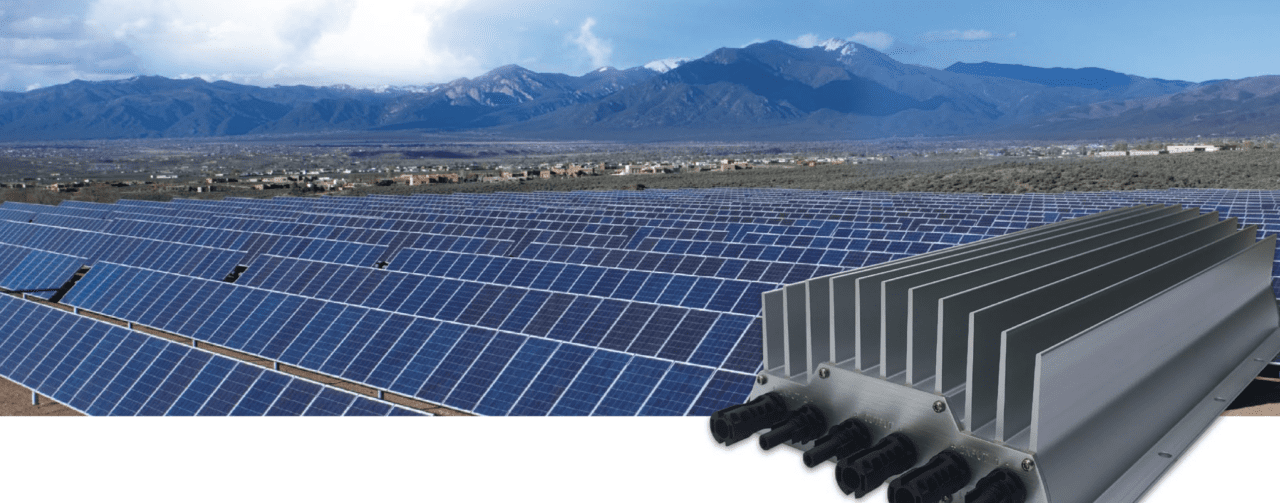The POWER Interview: DC-Coupled Storage Optimizing Solar PV Systems

Asset owners want to get the most out of their solar photovoltaic (PV) systems, which is why many today are adding energy storage to an installation or upgrading a project through repowering. Companies working in the space recognize that both new and older solar power systems can be optimized, thanks to innovative technologies and new equipment that enables more services from a project.
One such group is Ampt, a Fort Collins, Colorado-headquartered company founded in 2007. Levent Gun, Ampt's CEO who has years of experience in the high-tech space, recently spoke with POWER and provided insight into his company's products and the solar-plus-storage market.
The most activity is around co-location of solar and storage," said Gun. We do some amount of repowering, and I think it's going to pick up over time. Our projects are all around the world. It's about optimization of solar and energy storage."
Ampt in September 2022 announced it received a 380-MW order for Ampt String Optimizers to power a solar-plus-storage power plant in California. The power plant uses those optimizers to connect the PV system to 600 MWh of energy storage through a shared DC bus, or DC-coupled architecture. Ampt's technology, based on that DC-coupled configuration, is enabling operators to derive more value from their energy systems.
Ampt's string optimizers are DC/DC converters that apply maximum power point tracking, or MPPT, to each string of PV modules, and then deliver that power at a high and fixed voltage, rather than the variable and lower voltage of systems without that optimization. These features reduce the current requirements of the entire system, lowering the cost of electrical components such as cables, battery converters, and inverters.
Putting the batteries on the DC side turned out to be challenging for a lot of people. What we do in optimizing [a system], we enable adding lots of things onto the DC bus," said Gun. We're getting involved in hydrogen, and EV charging. It's a very convenient way of leveraging the PV for any type of energy source.
That's where we see the future of PV. For us to really replace fossil fuels we need to have dispatchable resources," he said. You can't do it with a PV plant that only operates 8 to 10 hours a day. You really need energy storage. So when we say someone is building a solar facility, it will be understood that it includes energy storage."
Gun dove deeper into the market for solar and storage in a question-and-answer session with POWER.
POWER: What are the major trends you're seeing in the solar-plus-storage market?
Gun: The solar-plus-storage market is growing thanks to corporate investment into ESG (environmental, social, governance) initiatives promoting renewable energy asset development and favorable legislation, including many provisions in the IRA. Developers and power plant owners plan to significantly increase utility-scale battery storage capacity in the United States over the next three years, reaching 30 GW by the end of 2025, according to the Energy Information Administration. Among the numerous factors driving the growth of solar-plus-storage in the U.S. and around the world are improving economics, policy support, and the simple fact that a renewables-dominated grid requires abundant storage to remain stabilized and resilient.
 Levent Gun
Levent GunWithin this growing segment, the trend we see is DC-coupled solar-plus-storage systems gaining market share over alternative architectures. In fact, we've seen continually growing demand for our power optimization technology for DC-coupled systems. Although AC-coupled infrastructure is common for existing solar-plus-storage projects, in many cases, opting for DC-coupled storage greatly improves energy transfer efficiency and performance, while lowering capex. Ampt's string optimizers help reduce costs and minimize complex installation processes associated with DC-coupled storage by using a high, fixed-voltage DC bus architecture. In a recent report analyzing the three main solar-plus-storage architectures available to the market today, including AC-coupled, variable voltage DC-coupled, and high, fixed-voltage DC-coupled, Wood Mackenzie concluded that the fixed DC-coupled architecture used in Ampt solutions provides superior cost and performance compared to the other options.
Finally, as new developments receive more funding, long queues for grid connectivity and necessary transmission development presents an opportunity for old PV systems to be repowered to maximize the ROI of existing systems. As many solar installations around the world are set to age-out in the 2020s, the market for repowering existing solar plants is expected to grow. Wood Mackenzie predicts that from 2020-2030, the potential market for solar repowering sites that have reached 20 years of operation could hit 67 GWdc cumulatively. For many project owners, repowering, not building, will make the most sense as it allows for production of more electricity while using existing land, interconnection points and other infrastructure.
POWER: Will there be growth in solar-plus-storage outside of utility-scale projects (i.e., residential or commercial/industrial applications)?
Gun: Yes, the trend of rising energy costs and a need for greater energy resilience in the face of increasingly frequent grid outages and emergency shutoffs has driven surging interest in behind-the-meter PV-plus-storage systems, especially in Europe. Ampt optimizers are already being used by our partners in Europe and Japan to enable DC-coupling of the batteries in many commercial and industrial applications. We expect this trend to continue.
POWER: Are there battery technologies that will be used as a replacement for (or alternative to) lithium-ion?
Gun: Some of the leading battery manufacturers have invested significantly in sodium-ion battery technology as a safer and lower-cost alternative to lithium-ion batteries. Sodium-ion batteries are lower density and therefore heavier than lithium-ion batteries, which is more challenging for electric vehicle (EV) applications, but fine for stationary applications like solar-plus-storage power plants. However, our DC conversion technology is deployed in a battery agnostic solution and will continue to provide value to the market regardless of the prevailing chemistry. With Ampt, DC-storage devices can be seamlessly and flexibly co-located with solar power plants, eliminating obstacles seen in AC-coupled systems, such as the need for ancillary hardware parts and construction of separate solar and storage systems. I should also mention that with a fixed DC-coupled system, it is possible to effectively accommodate longer duration storage, which is a battery trend we're already seeing play out.
POWER: How important is adding storage to a solar (or other renewable energy) project when it comes to grid integration and ancillary services?
Gun: Adding reliable storage to solar and renewable energy assets is instrumental in reducing energy intermittency, shaving peak demand, and stabilizing the grid. In regions with legislation outlining an aggressive transition to renewable energy, robust and accessible storage capacity will be an important step away from carbon-intensive energy assets.
Market growth is also being driven by solar-plus-storage owners' ability to take advantage of energy arbitrage and other market opportunities due to the dispatch flexibility of storage. For example, batteries can store excess energy when solar is abundant and electricity prices are low, and then dispatch the stored energy when demand increases. Solar plus storage also enables the delivery of ancillary services like frequency response and capacity payments that create additional revenue streams. We're also seeing more PV-plus-storage use cases of storage as a transmission asset (SATA), which help avoid expensive transmission system upgrades by providing additional operational capacity to existing lines. SATA allows you to transmit energy produced and stored in one location to another less-congested location.
For example, Ampt's technology is enabling a 240-MW, 560-MWh project using a fixed DC-coupled architecture in Chile's Atacama Desert that is already improving transmission system capacity while providing renewable energy to the area's mining industry.
POWER: Continued advancements in technology mean solar project owners and operators have opportunities to get more out of their systems, though that also brings challenges. What are some of the major pain points?
Gun: How do you take a 20-year-old plant, where the inverters are failing, and the company that sold them doesn't exist anymore? Repowering is really how do you take an old asset and get the most out of it. Like renovating your house. How can you bring the energy production levels up?
The No. 1 pain point for asset owners, especially in the U.S., is the inverters. The way the U.S. market evolves, the inverter companies that were leading in 2010 or 2012, they are not around anymore. They've exited the market many years ago. That's becoming an issue for asset owners. It's a pain point because technology evolves.
With Ampt, we can match different technologies. We can fill in the gap between various technologies. For that reason, a lot of asset owners come to us naturally to avoid a lot of those expenses, with labor, retrenching, rewiring, etc. Inverter replacement applications ... that's predominantly what people need today.
I'm seeing people looking at their portfolios and planning that process over a multi-year period. Once that project is repowered, it will generate more energy. You could see double-digit more energy out of these systems. That's a good return on investment if they can do that economically.
-Darrell Proctor is a senior associate editor for POWER (@POWERmagazine).
The post The POWER Interview: DC-Coupled Storage Optimizing Solar PV Systems appeared first on POWER Magazine.